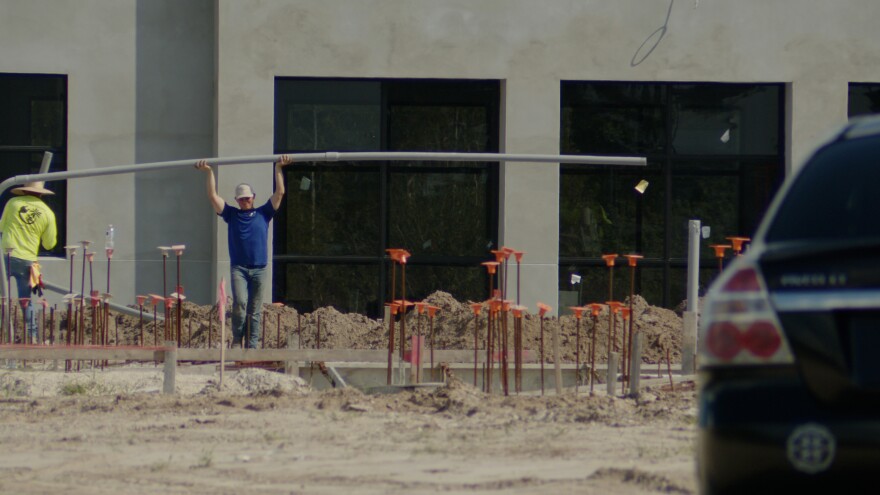It seems like we hear about another big-dollar land buy in Southwest Florida all the time. The price tags often stretch into the hundreds of millions of dollars.
Much of what's happening to the land here dates back a relatively short time: about 60 to 65 years.
The pioneer developers who made this area what it's becoming leave a memorable legacy. But some people worry about our fragile environment and the explosive population growth that continues.
Their names were Collier, Griffin, Rosen, Ratner, Sanders. Those were some of the real estate entrepreneurs who saw great potential for this area to grow. After all it had beaches and the Gulf, nice weather, and huge amounts of mostly untouched land.
It even had lots of limestone to crush into aggregate. That's vital for foundations for roads, homes and other buildings. It also makes concrete.
And what about laws to protect land, water and wildlife?
"There were very, very little regulations on development," Professor Shelton Weeks of the FGCU Lutgert College of Business said. "Basically if you owned the land you could do anything you wanted with it."
The boom began and doing business could be a bit like the wild west. Southwest Florida native Paige Rausch said she would tag along with her dad when she was a child. Rausch said she saw some of the developers when they were in deal-making mode.
"So your word was your bond," Rausch said. "But your handshake was like a contract."
The legal document would be drawn up later, according to Rausch. She said if a person broke that word, violated that handshake, it could take many years to get back to respectability.
Rausch added that the land men sometimes met at a now-closed bar in Hendry County. She said she often heard that the men would have some drinks and then split up massive land holdings.
"There was a game they played called High Card Cut," Rausch said. "They had bought up a huge amount of property, and they split it up with High Card Cut."
Journalist Glenn Miller has lived on the Gulf Coast nearly his entire life, and is past president of the Southwest Florida Historical Society.
"Did they care about what they were doing to the land?" Miller asked. "Probably not. Probably didn't think about it."
Miller said the old-time developers leave a complicated legacy: Some did a lot to help the area, but some also damaged the environment. He sees it as damage that affects Southwest Floridians now.
"There's got to be a limit," Miller said. "How much more can the land take? How much more can the water take? How many more people can move here?"
Actually quite a lot more, according to Shelton Weeks. He believes developers now should stay where they are. He said he'd love to see them building on less land, and building up, instead of sprawling out into the center of the peninsula.
"I tend to favor looking at higher density, if we are going to continue to grow," Weeks said. "I feel it will have fewer negative trade-offs than the sprawl model."
But right now developers are pushing to build large communities inland — 35 or more miles from the Gulf.
So how do we judge those pioneers of this land?
"They had a belief in this area and they wanted to be remembered," Paige Rausch said. "And they wanted to be remembered for doing good. They never wanted to harm the family name. It was doing the right thing for future generations."
She pointed to Ben Hill Griffin III as an example. He was chief executive of the Alico Corporation In 1992. That's when he donated 760 acres — more than one square mile of land — to become the campus of Florida Gulf Coast University. He also contributed millions of dollars to build Alico Arena and to help fund academic programs.
Weeks noted that the marketing of some communities, like Cape Coral, could have been more forthcoming. He said that the advertising tended to be a bit loose when using the term "waterfront." Out-of-town buyers often assumed that meant Gulf-front lots, when in reality many lots were along canals.
As for other things that drove the developers, Weeks tends to agree with Rausch.
"Yes there was a profit motive," Weeks said of the pioneers. "But at the end of the day they were building communities that they felt they could be proud of."
So now, years later, the communities the pioneers built remain as their legacy. And Weeks said he's optimistic about this area, despite the daunting issues of lack of affordable housing and water quality, to name just two. Weeks said in 2025 many developers and home buyers view sustainability and environmental protection as major positives for a community.
WGCU is your trusted source for news and information in Southwest Florida. Mike Walcher is a reporter for WGCU News, and also teaches journalism at FGCU.







